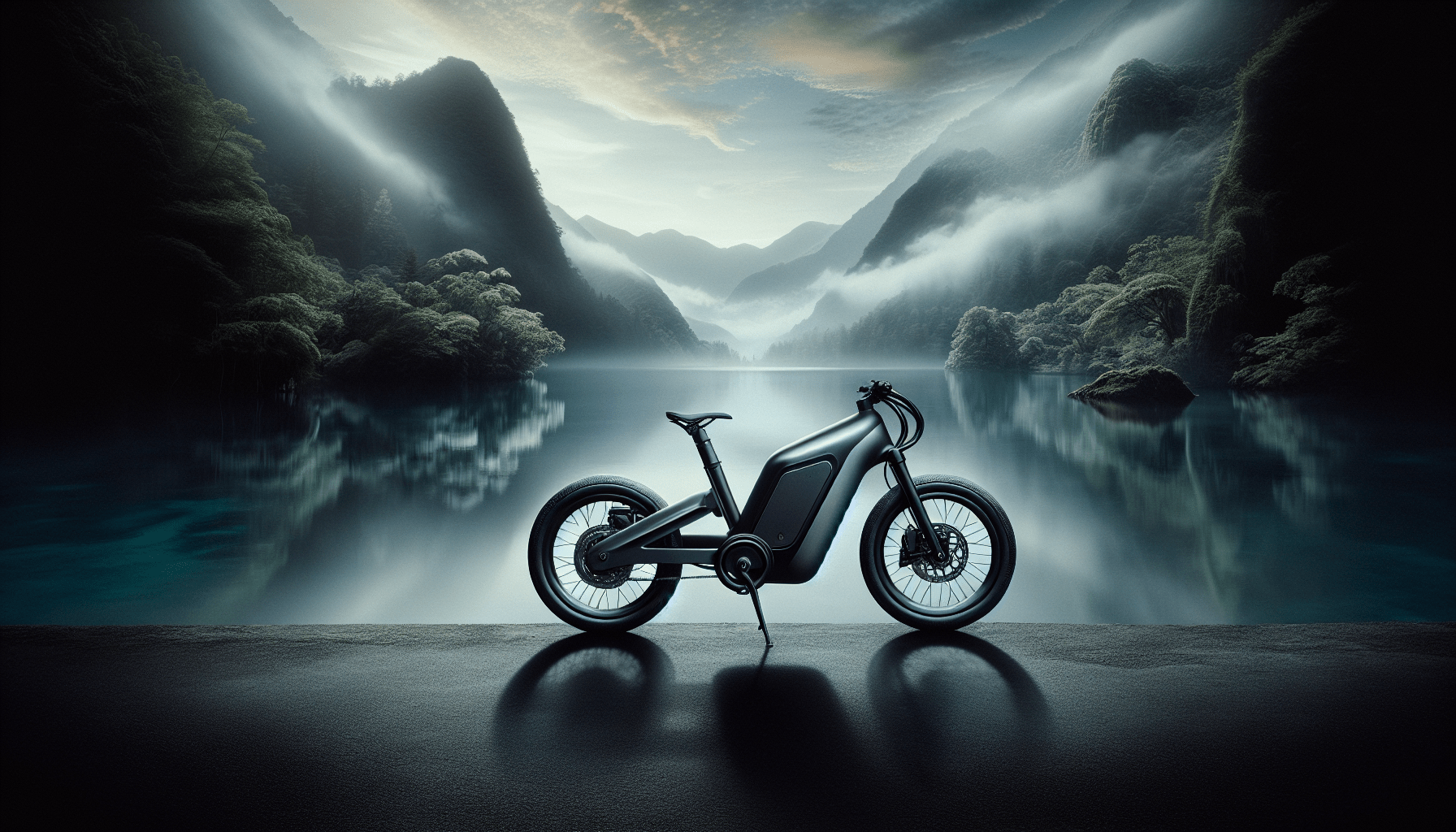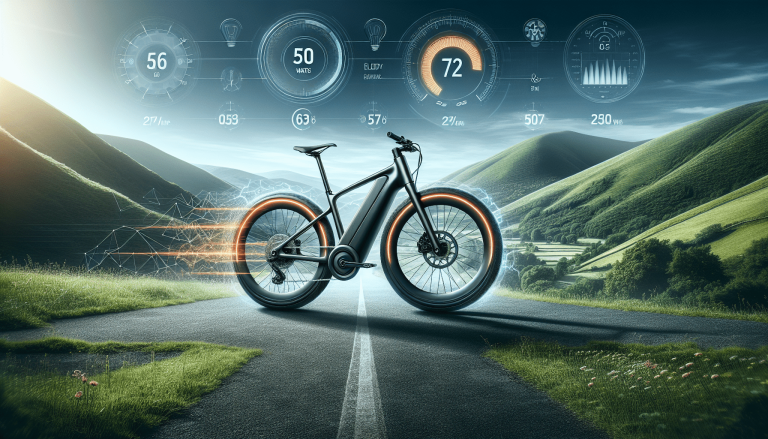Can I Ride An Electric Bike Without Charging It?
Imagine never having to worry about running out of battery power while riding an electric bike. Sounds too good to be true, right? Well, what if we told you that there might be a way to do just that? In this article, we will explore whether it is possible to ride an electric bike without charging it, and delve into the fascinating world of self-charging electric bikes. So, get ready to uncover the secrets behind these innovative two-wheelers that could potentially change the way we view electric transportation. Strap on your helmet and let’s embark on this electrifying adventure!
Understanding Electric Bikes
What is an electric bike?
An electric bike, also known as an e-bike, is a bicycle that is equipped with an electric motor, which provides assistance to the rider. This motor is powered by a rechargeable battery and can be activated to provide additional power and speed while pedaling.
How do electric bikes work?
Electric bikes work by combining human pedaling power with the assistance of an electric motor. When the rider pedals, the motor is activated and provides additional power, making pedaling easier and allowing for faster speeds. The motor is powered by a battery, which is typically located on the frame of the bike. The battery can be charged by plugging it into a power source and can usually be removed for convenient charging.
Importance of charging an electric bike
Charging an electric bike is essential for ensuring its functionality and performance. Just like any electronic device, the battery of an electric bike needs to be regularly charged to maintain its capacity and lifespan. Proper charging habits not only prolong the battery’s life but also optimize the overall performance of the bike. Neglecting to charge the battery can result in reduced range, decreased motor power, and even potential damage to the battery itself.
Battery Life and Capacity
Factors affecting battery life
Several factors can impact the lifespan of an electric bike’s battery. Firstly, the age of the battery plays a role, as older batteries tend to have reduced capacity. Additionally, the battery’s overall health and condition can affect its lifespan. Extreme temperatures, improper charging techniques, and excessive discharge can all contribute to faster battery degradation. It is important to note that each battery has a limited number of charge cycles it can handle before its capacity starts to diminish.
Battery capacity and range
Battery capacity refers to the amount of energy the battery can store, which directly impacts the bike’s range. A higher capacity battery can provide a longer distance before needing to be recharged. However, it is important to consider that factors such as the rider’s weight, terrain, and level of assistance required can also affect the range of the bike. It is advisable to choose a bike with a battery capacity that suits your riding needs to ensure a sufficient range.
Importance of maintaining battery health
Maintaining the health of the battery is crucial for maximizing its lifespan and performance. Proper charging habits, such as avoiding overcharging or deep discharging, can prevent unnecessary strain on the battery. Storing the battery in a cool and dry environment, away from extreme temperatures, can also help preserve its condition. Regularly checking the battery’s charging levels and addressing any abnormalities promptly can ensure its longevity and help avoid unexpected battery failures.

Riding an Electric Bike without Charging
Battery range limitations
Every electric bike has a specific range, which is the maximum distance it can travel on a single charge. Riding beyond this range without recharging the battery is not recommended, as it can lead to the bike running out of power. It is essential to be aware of your bike’s range limitations and plan your rides accordingly to avoid being stranded on the road without power.
Effects of riding on low battery
Riding on a low battery level can have various effects on the performance of an electric bike. As the battery power decreases, the motor’s assistance may diminish, making pedaling more challenging. The bike may also experience a decrease in speed and range. Riding on a low battery can put additional strain on the battery, potentially causing it to degrade faster. It is advisable to avoid riding on a low battery and recharge it as soon as possible.
Signs that the battery needs charging
There are several signs that indicate a battery needs charging. Firstly, the motor assistance may become weaker or completely stop, indicating a low battery level. Most electric bikes also have a battery level indicator, either on the battery itself or on the bike’s display, which can show the remaining charge. If the battery level is significantly low or flashing, it is time to recharge the battery. Additionally, if you notice a decrease in speed or range, even with the assistance activated, it may be a sign that the battery needs charging.
Tips for Prolonging Battery Life
Proper charging habits
Adopting proper charging habits is crucial for prolonging the lifespan of an electric bike’s battery. It is recommended to follow the manufacturer’s guidelines regarding charging frequency and duration. Avoid overcharging the battery, as leaving it plugged in for an extended period can cause unnecessary strain. Similarly, deep discharging the battery by completely draining it before recharging can be detrimental to its health. Charging the battery when it reaches around 20-30% capacity and avoiding frequent full discharges can help maximize its lifespan.
Avoiding extreme temperatures
Extreme temperatures, whether extremely hot or cold, can have adverse effects on the battery’s performance and lifespan. It is important to store the battery in a cool and dry environment, away from direct sunlight or freezing temperatures. When riding in extreme weather conditions, it is advisable to wrap the battery in insulation to regulate its temperature. By avoiding exposure to extreme temperatures, you can help maintain the battery’s health and optimize its performance.
Efficient energy usage
To prolong the battery life and maximize the range of your electric bike, it is important to optimize your energy usage. Utilizing the bike’s different levels of assistance according to your needs can help conserve battery power. For shorter rides or flat terrains, using a lower level of assistance or even switching to manual pedaling can help save energy. Additionally, maintaining a steady and consistent pace while riding can contribute to more efficient energy usage. Being mindful of these energy-saving techniques can help extend your battery’s life and range.

Emergency Situations
Running out of battery while riding
In the unfortunate event of running out of battery while riding, there are a few options to consider. If possible, try to find the nearest charging station or a location where you can recharge your bike’s battery. Alternatively, if you have a spare battery, you can replace the depleted battery with the charged one. If neither of these options is available, you can resort to manually pedaling the bike without assistance or even pushing it to your destination.
Pushing an electric bike without power
Pushing an electric bike without power can be more challenging than a traditional bicycle due to the heavier weight. However, it is still possible to move the bike by pushing it manually. Be sure to disengage the motor to prevent any accidental power assistance. Pushing the bike can be physically demanding, especially on inclines, so it is advisable to enlist the help of others if available. Additionally, take breaks when necessary to avoid excessive strain.
Getting home without charging
If you find yourself far from home and unable to charge your electric bike, there are a few options to consider. Depending on the distance and terrain, you may be able to pedal the bike without using the motor assistance. Switching to a lower assistance level or engaging in manual pedaling can help conserve the remaining battery power. Alternatively, if public transportation is available, you can consider taking your bike on a bus or train to get closer to your destination. It is always helpful to plan your rides with charging options in mind to avoid being caught in a situation without power.
Alternative Power Sources
Using a spare battery
Having a spare battery can be a convenient solution for extending the range of your electric bike. If your bike’s battery runs low, you can replace it with the fully charged spare battery. This allows you to continue riding without interruption, especially on lengthy trips or when charging stations are not readily available. However, it is important to consider the added weight of carrying a spare battery and ensure that it is securely attached to the bike.
Solar charging for electric bikes
Solar charging is an eco-friendly alternative power source for electric bikes. Solar panels can be installed on the bike or on charging stations to harness sunlight and convert it into electrical energy. By utilizing solar power, you can reduce your dependence on traditional charging methods and take advantage of renewable energy sources. Solar charging can be particularly beneficial in areas with ample sunlight, providing a sustainable solution for charging your electric bike.
Battery swapping services
Battery swapping services are becoming more prevalent, especially in urban areas. These services allow you to swap your depleted battery for a fully charged one at designated stations. This eliminates the need for waiting around to charge your battery and provides a convenient and quick solution for extending your bike’s range. Battery swapping services are typically subscription-based or require the use of proprietary battery packs, so it is advisable to familiarize yourself with the available options in your area.

Assessing Riding Needs
Determining your daily riding distance
One of the key factors in choosing an electric bike is determining your average daily riding distance. Consider your routine and the purpose of your rides. If you primarily use the bike for short commutes or errands within the city, a bike with a lower range may suffice. However, if you plan on tackling longer rides or utilizing the bike for recreational purposes, opting for a higher range electric bike would be more suitable.
Choosing an electric bike with sufficient range
When selecting an electric bike, it is essential to choose one with a range that meets your riding needs. Depending on your average daily riding distance, terrain, and level of assistance required, make sure to opt for a bike with a battery capacity that will provide a comfortable range without the need for frequent charging. Having a sufficient range ensures that you can enjoy your rides without worrying about running out of power.
Considerations for long rides
For those planning on embarking on long rides or multi-day trips, additional considerations are necessary. Opting for an electric bike with a larger battery capacity or the ability to attach a spare battery would be beneficial for extending the range during these extended adventures. It is also essential to plan ahead and ensure that charging options are available along the route to avoid any inconvenience or unexpected battery depletion during the journey.
Balancing Exercise and Electric Assistance
Pedal-assist versus throttle-only
Electric bikes offer two main types of assistance systems: pedal-assist and throttle-only. Pedal-assist systems provide assistance when the rider pedals, mimicking a regular bicycle experience while providing additional power. Throttle-only systems, on the other hand, allow the rider to control the motor’s assistance level with a throttle, similar to a motorcycle. Each system has its advantages and disadvantages, and choosing between them depends on personal preference and the desired balance between exercise and electric assistance.
Finding the right level of assistance
Finding the right level of assistance is crucial for balancing exercise and electric assistance. Depending on the terrain, fatigue level, or desired intensity of the ride, adjusting the assistance level accordingly can provide the desired balance. For a more strenuous workout, utilizing a lower level of assistance or even switching to manual pedaling can engage more muscles and increase the exercise benefits. On the other hand, increasing the assistance level can help tackle steep hills or longer distances with ease.
Engaging in manual pedaling
While electric bikes provide the convenience of motor assistance, manual pedaling should not be overlooked. Engaging in manual pedaling not only helps maintain or improve fitness levels but also helps conserve battery power. By utilizing the bike’s gears and pedaling efficiently, you can reduce the strain on the battery and extend its range. Combining manual pedaling with the electric motor’s assistance can create a harmonious balance between exercise and ease of riding.

Importance of Regular Charging
Ensuring safety and reliability
Regularly charging an electric bike is vital for ensuring its safety and reliability. Just like any other vehicle, riding an electric bike with insufficient power can lead to unpredictable behavior and potential accidents. By regularly charging the battery and ensuring that it is properly fueled, you can have peace of mind knowing that your bike is in a safe and reliable condition for every ride.
Preventing battery degradation
Proper and regular charging habits can help prevent battery degradation. Over time, the capacity of a battery naturally diminishes, but following optimal charging practices can slow down this process. Avoiding overcharging, deep discharging, and extreme temperature exposure are all essential in maintaining the health of the battery. By preventing premature degradation, you can extend the lifespan of the battery and avoid the need for expensive replacements.
Optimizing overall performance
Consistent charging is crucial for optimizing the overall performance of an electric bike. A fully charged battery ensures that the motor is operating at its full potential, providing the expected power and speed assistance. Riding with a depleted battery can result in reduced motor power, slower speeds, and decreased range. By charging the battery before each ride, you can enjoy the optimal performance of your electric bike and make the most out of every ride.
Conclusion
The necessity of charging an electric bike
Charging an electric bike is a necessity that ensures its functionality, performance, and reliability. To enjoy the benefits of an electric bike, it is essential to charge the battery regularly and maintain it properly. By following proper charging habits, avoiding extreme temperatures, and utilizing energy-efficient riding techniques, you can prolong the battery’s lifespan, optimize performance, and prevent unexpected battery failures.
Finding a balance between riding and charging
While it is important to prioritize regular charging, finding a balance between riding and charging is equally crucial. Understanding the range limitations of your electric bike, planning rides with available charging options, and assessing your riding needs can help strike this balance. By considering factors such as riding distance, assistance level, and battery capacity, you can ensure that your electric bike meets your expectations while minimizing the need for frequent charging. Remember that the joy of riding an electric bike can only be fully experienced when it is properly charged and ready to hit the road.







